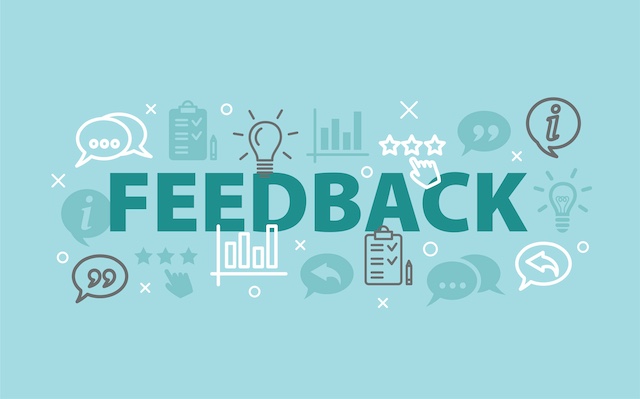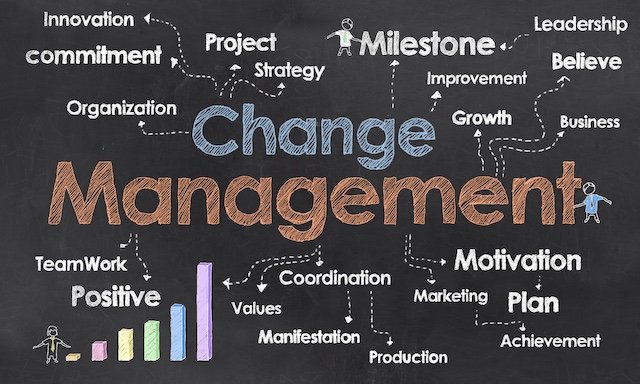Feedback is an essential tool for growth and success in the workplace. Whether addressing areas for improvement, celebrating achievements, or fostering collaboration, effective feedback helps individuals and teams thrive. How feedback is delivered is just as important as the input itself. Feedback models provide structured approaches to ensure it is clear, constructive, and actionable.
At work, feedback models can be used in a variety of scenarios, such as performance reviews, coaching sessions, team meetings, or one-on-one discussions. They are particularly valuable when addressing sensitive issues, providing developmental guidance, or reinforcing positive behaviors. By offering a consistent framework, these models help eliminate ambiguity and make feedback more impactful.
In this article, we’ll explore the purpose and a common example of each feedback model and when to use it.
7 Essential Types of Feedback Models
Effective feedback requires structure and clarity, which is where feedback models excel. Here are seven popular feedback models, when and how to use them, and why they are effective:
1. Situation-Behavior-Impact (SBI) Model
- Definition: The SBI Model is a framework for providing clear and constructive feedback by focusing on three elements: the specific situation, the observed behavior, and its impact. It promotes objective, actionable feedback by removing judgment and emphasizing facts.
- When to use: To provide clear and specific feedback about a particular incident.
- How to use: Focus on three key elements: the situation, behavior, and impact.
- Why it’s effective: The SBI model removes ambiguity by tying feedback to observable actions and measurable outcomes, ensuring the recipient understands what they did well or need to improve.
- Example: A manager addresses an employee who interrupted others during a meeting.
- Situation: “During yesterday’s team meeting at 2 PM…”
- Behavior: “…you frequently spoke over others while they were presenting their ideas.”
- Impact: “…this disrupted the flow of the discussion and made it difficult for others to share their input.”
2. The Pendleton Model
- Definition: The Pendleton Model is a feedback framework designed to encourage constructive and balanced feedback. It involves discussing what went well, areas for improvement, and strategies for development while engaging the individual in self-reflection and solution-focused thinking.
- When to use: Ideal for developmental feedback in mentoring or performance discussions.
- How to use:
- Ask the recipient what went well.
- Add your observations about what went well.
- Ask what could be improved.
- Share your suggestions for improvement.
- Why it’s effective: This model encourages dialogue, empowering the recipient to take ownership of their strengths and areas for improvement.
- Example: A mentor reviews an intern’s presentation skills.
- Mentor: “What do you think went well during your presentation?”
- Intern: “I think I explained the data clearly.”
- Mentor: “I agree. Your graphs were well-designed, and your explanation was clear. What do you think could be improved?”
- Intern: “I felt I rushed through some sections.”
- Mentor: “That’s a good observation. I’d suggest practicing pacing to ensure your audience can follow along.”
3. The BOOST Model
- Definition: The BOOST Model is a feedback framework focused on being Balanced, Objective, Observed, Specific, and Timely. It ensures feedback is constructive, grounded in facts, and delivered promptly to maximize its impact and effectiveness.
- When to use: To give concise, actionable feedback in fast-paced environments.
- How to Use: Follow the acronym:
- Balanced: Offer both positive and constructive feedback.
- Objective: Focus on facts, not opinions.
- Observed: Base feedback on what you have directly seen or experienced.
- Specific: Provide detailed examples to avoid vagueness.
- Timely: Deliver feedback promptly for maximum relevance.
- Why it’s effective: The BOOST model ensures feedback is practical and avoids emotional or subjective interpretations.
- Example: A supervisor provides quick feedback to an employee about a customer interaction.
- “Your response to the customer was excellent (Balanced). You kept your tone professional and resolved the issue efficiently (Objective, Observed). Specifically, you reassured the customer by offering a solution immediately (Specific). Great job handling this so promptly today (Timely)!”

4. The COIN Model
- Definition: The COIN Model is a feedback framework that focuses on four key elements: Context, Observation, Impact, and Next Steps. It helps structure feedback by setting the context, describing observed behavior, explaining its impact, and collaboratively planning actionable steps for improvement.
- When to use: Suitable for addressing specific issues or ongoing performance concerns.
- How to use:
- Context: Explain the situation or context.
- Observation: Describe what you observed.
- Impact: Discuss the effects of the behavior.
- Next Steps: Collaborate on actionable steps for improvement.
- Why it’s effective: COIN emphasizes forward-thinking solutions, making it ideal for fostering improvement.
- Example: A manager addresses an employee consistently missing deadlines.
- Context: “Over the past month, I’ve noticed that project deadlines have been missed.”
- Observation: “For example, the report due last Friday was submitted two days late.”
- Impact: “This caused delays for the entire team, as they couldn’t proceed with their tasks on time.”
- Next Steps: “Let’s set up a planning session to break down your workload and set realistic deadlines to prevent this in the future.”
5. The GROW Model
- Definition: The GROW Model is a coaching framework that guides goal-setting and problem-solving through four stages: Goal, Reality, Options, and Will. It helps individuals clarify objectives, assess their current situation, explore possibilities, and commit to actionable next steps (what they ‘will’ do next).
- When to use: Best for coaching and professional development discussions.
- How to use: Work through four stages:
- Goal: Define what the employee wants to achieve.
- Reality: Discuss their current situation and challenges.
- Options: Explore possible solutions or paths forward.
- Will: Create a concrete action plan.
- Why it’s effective: The GROW model is collaborative and encourages employees to take ownership of their development journey.
- Example: A manager coaches an employee on career advancement.
- Goal: “What’s your goal for the next six months?”
- Reality: “Currently, you’ve been excelling in your role, but there are few leadership opportunities in your team.”
- Options: “Would you consider cross-training in another department or leading a small project to gain leadership experience?”
- Will: “Let’s create a plan where you can take on a leadership role in a project within the next quarter.”
6. The Evidence-Effect-Change (EEC) Model
- Definition: The EEC Model is a feedback framework that emphasizes providing factual evidence, explaining the effect of the behavior, and suggesting a specific change. It ensures feedback is clear, actionable, and focused on improvement.
- When to use: For delivering constructive criticism and driving change.
- How to use:
- Evidence: Provide specific examples of the behavior or issue.
- Effect: Explain the consequences or impact of the behavior.
- Change: Suggest how the behavior can be adjusted or improved.
- Why it’s effective: This model clearly ties feedback to desired outcomes, helping employees understand the need for change.
- Example: A manager provides feedback about an employee’s tardiness.
- Evidence: “You’ve arrived late to work three times this week.”
- Effect: “This affects team morale, as others feel they’re covering for you.”
- Change: “Please ensure you arrive on time moving forward. Let me know if there’s anything preventing this so we can address it.”
7. The Feedforward Model
- Definition: The Feedforward Model focuses on providing constructive suggestions for future improvement rather than critiquing past performance. It emphasizes a positive, forward-looking approach to inspire growth and actionable change.
- When to use: When focusing on future performance rather than past actions.
- How to use:
- Instead of dwelling on past mistakes, provide suggestions for future actions or improvements.
- Frame feedback in a positive, forward-looking manner.
- Why it’s effective: Feedforward shifts the focus from criticism to actionable insights, creating a more constructive and motivating feedback experience.
- Example: A team leader offers guidance to a team member preparing for a presentation.
- “For your upcoming presentation, try to focus on simplifying your slides and practicing transitions between topics. This will help your audience follow along more easily and create a stronger impact.”
Each feedback model serves a unique purpose, and selecting the right one depends on the situation, goals, and context. By understanding these models, leaders can provide meaningful feedback that promotes growth, builds trust, and strengthens team dynamics.
Conclusion
Using feedback models in the workplace is essential for fostering a culture of continuous improvement, open communication, and employee development. These models provide a structured way to deliver feedback so that it is clear, specific, and actionable. Whether addressing performance issues, recognizing achievements, or encouraging growth, feedback models help create a positive and productive environment.
By implementing feedback models, employers can offer constructive criticism that is not only easier for employees to understand but also more likely to lead to lasting change. These models make feedback more focused, reducing misunderstandings and promoting a solution-oriented mindset. Additionally, they encourage dialogue, helping employees reflect on their actions, build on their strengths, and continuously improve.
In the end, feedback models are an invaluable tool for improving workplace relationships, boosting employee morale, and driving overall success. When feedback is delivered effectively, it becomes a powerful mechanism for growth, productivity, and long-term organizational success.
INTOO can support your efforts to help your employees grow with leadership training, employee training programs, workshops, and career coaching. Contact us today to learn more.











